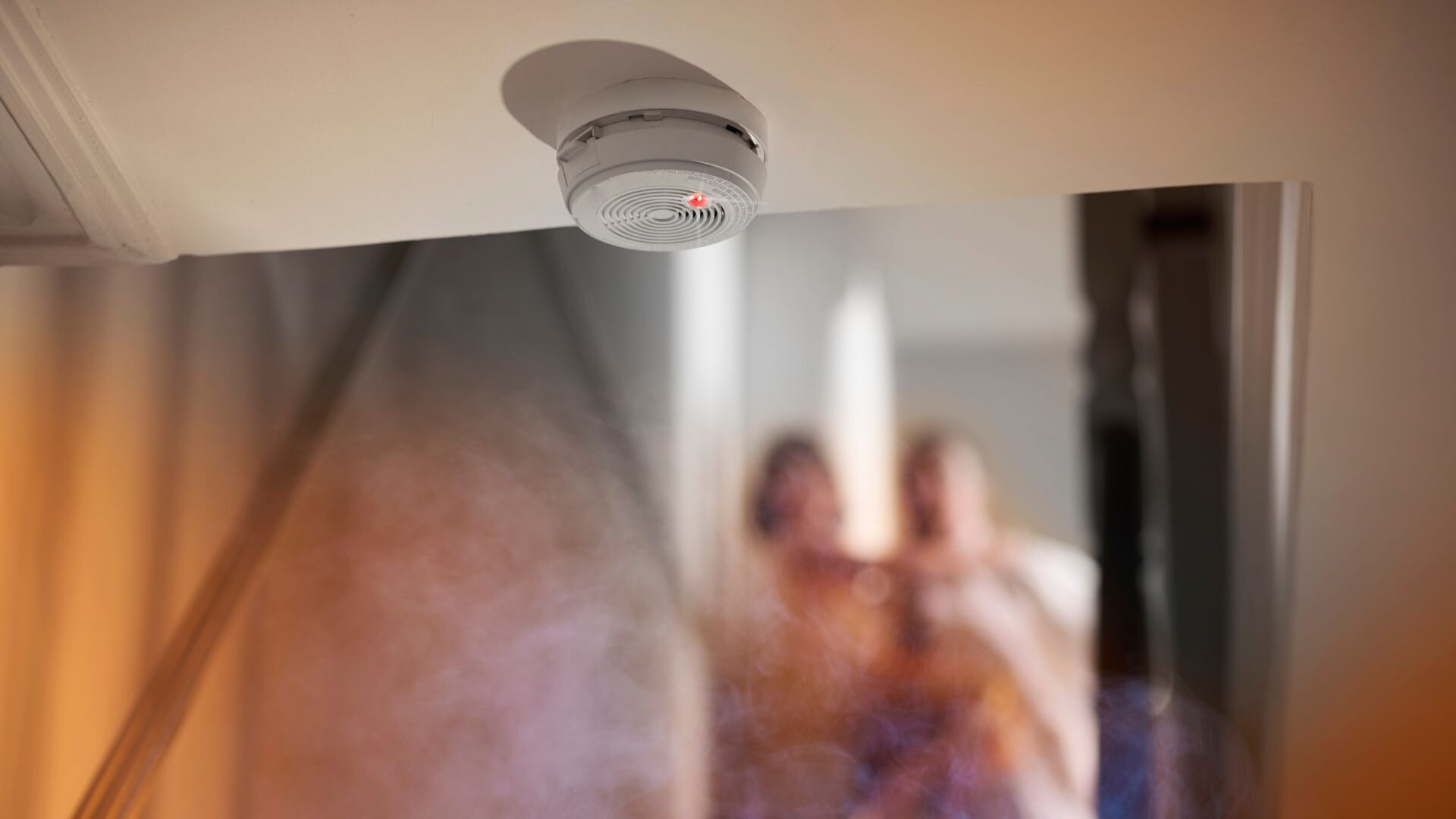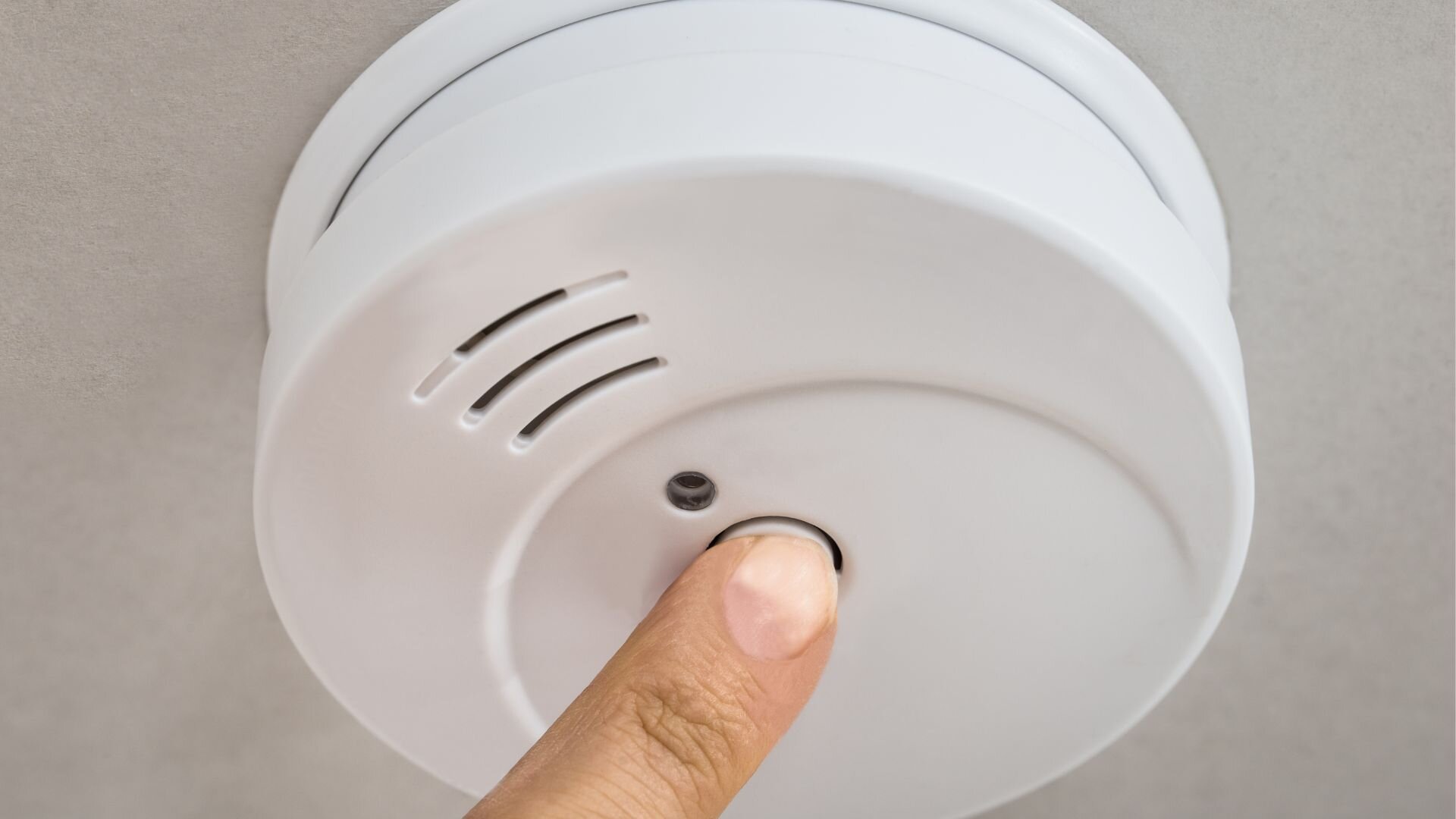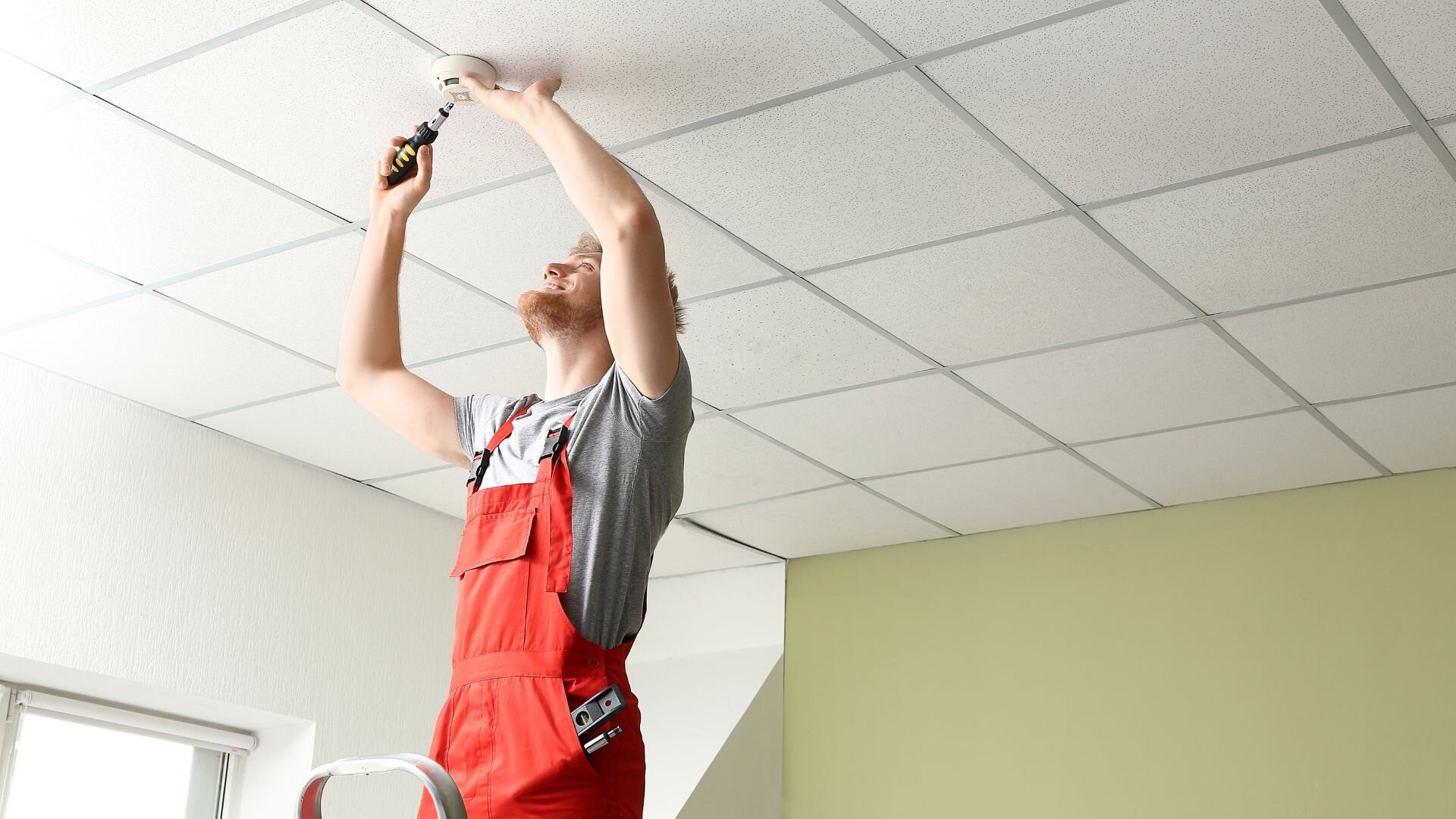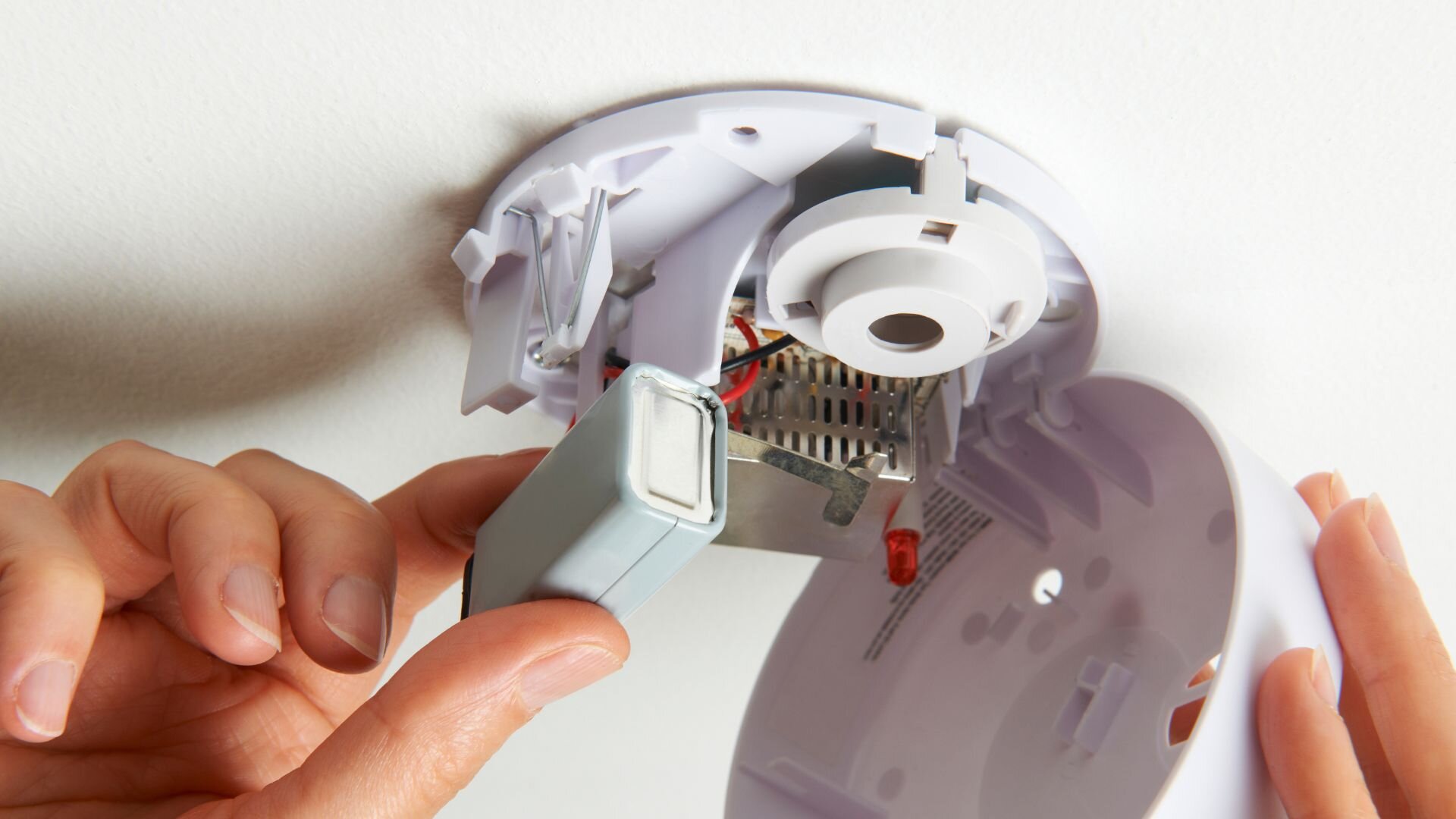Smoke alarms are essential for home fire safety. Surprisingly, many people don’t test them correctly, or even at all. Simply setting aside a few minutes each month to test your smoke detectors can make all the difference when it matters most.
At Enersol, our Residential Electrician Gold Coast - By testing your smoke alarms each month, you’ll have peace of mind knowing they’ll alert everyone early enough to escape. An active smoke alarm can double survival chances by giving those crucial extra minutes to get out safely.
Australian Standard AS 3786 outlines strict guidelines for smoke alarm placement, condition, and monthly testing protocols for proper fire prevention protection.
Regularly checking your smoke alarms confirms that their batteries and sensors are functioning. It helps detect any wiring issues, identifies alarms needing replacement, and lets you remove dust and debris that might cause false alerts, ensuring these lifesaving devices are ready if a real fire occurs. Learn more about wiring guides here.
Understanding Smoke Alarm Technology
Smoke alarms come in two main types: ionisation and photoelectric. Ionisation alarms respond more to flaming fires, while photoelectric alarms are quicker at sensing smouldering fires. Some alarms, known as dual-sensor smoke alarms, combine both technologies for broader detection capabilities. It’s crucial to understand which type of alarm you have installed, as this knowledge will inform the maintenance and testing practices you should follow.

Recognising Alarm Types
Battery-Operated
These alarms depend entirely on battery power and are more prone to failure due to dead batteries. They require regular battery replacements and are suitable for places without wiring.
Hardwired
Hardwired alarms are connected to the home’s electrical system but often have a battery backup. They are considered more reliable but still require battery replacement and can have wiring issues that may necessitate professional inspection.
Smart Smoke Alarms
The latest smoke alarm technology connects to your home Wi-Fi and can send alerts to your phone, making monitoring their status easier and allowing you to respond quickly in an emergency.
Steps for Monthly Testing
Follow these simple steps to functionally test all the smoke alarms in your home or business each month:
First, visually check all the smoke alarms. Look for any physical damage, check that vents are clear of dust or debris, verify the units are correctly mounted on ceilings or high walls at least 30cm from corners, check for any stains or excess dirt around the vents, and ensure the green indicator light is on for any mains-powered smoke alarms.
Next, push the test button on each smoke alarm until the alarm sounds. Stand close enough to the detector to hear the alarm blare within a few seconds. Manually testing the smoke alarms triggers the internal sensor to simulate smoke and sound the 85-decibel alert tone. This verifies that the sensor, wiring and horn all work correctly to detect smoke and provide a piercing alert. Any alarm that does not make a loud sound during testing requires immediate replacement.

When testing the smoke alarms, also check power sources. For battery-operated home smoke detectors, use the test to check that the batteries are powering the unit properly. If the alarm has a weak sound or fails to activate when the test button is pushed, it’s a sign that the batteries need to be replaced. For any mains-powered smoke alarms, the monthly testing checks that the electrical circuits and connections are operating correctly to power the detector.
Replace the batteries in any smoke alarms that fail the operational test immediately. Only use approved replacement batteries recommended by the manufacturer. As a rule, smoke alarm batteries should be replaced annually to ensure peak performance, even if monthly testing shows remaining battery power. Never remove batteries or turn off smoke detectors to silence false alarms—always identify and rectify the source of nuisance smoke instead.
While testing, note the manufacture date printed on the back of each smoke alarm. The smoke detector unit should be replaced if itis ten years old or older. The components and sensors lose sensitivity over time.
Finally, during testing, use a vacuum hose attachment or soft brush to remove any accumulated dust, spider webs, or other debris from around the vents and inside the cover of each smoke alarm. Never paint over smoke alarms or use household chemicals or cleaners around the smoke sensor, as this can damage their effectiveness.
Tips for Effective Smoke Alarm Testing
For the most comprehensive safety testing:
- Test all smoke alarms in the home or building monthly at a minimum and after any extended absences.
- Have a family member or helper safely reach the alarms on high ceilings or hard-to-access locations.
- Test the smoke alarms when household members are awake and can hear the sound, not late at night when sleeping.
- Carefully follow the manufacturer’s instructions for testing provided in the smoke alarm’s user manual.
- Note the dates each alarm was tested and any issues identified for your records.
- Consider installing integrated smoke alarms that are wirelessly interconnected. All other home detectors are alerted when one unit senses smoke and sounds an alarm. This provides extra warning time to evacuate bedrooms or floors far from the fire source. A licensed electrician can install integrated mains-powered detectors.
When Professional Help is Needed
While self-inspecting components of your electrical system expand awareness, specific scenarios uncover issues requiring professional assistance. If any smoke alarms fail visual checks or operational tests with batteries changed, this indicates a need for a complete replacement.

Outdated or damaged smoke alarms can be dangerously unreliable. If false alarms happen frequently, it’s wise to hire an electrician to methodically solve the problem. Intermittent faults can randomly set off sensitive detectors, even when there’s no real hazard. With hardwired detectors, any wiring issues can lead to blind spots during power outages.
Additional alarms were added to meet expanding safety codes, and mandatory interconnected units were added to ensure sufficient coverage and guard against preventable tragedies.
In essence, while homeowners can catch some obvious issues through visual inspections, delving deeper and finding comprehensive fixes requires professional expertise and tools. If any core safety components need replacement or upgrades to meet modern standards, it’s time to call in qualified electricians.
The same goes for chasing down and resolving stubborn wiring gremlins behind recurrent false triggers. Don’t delay getting professionals involved when inspection findings reveal that electrical expertise is required. Home safety technology evolves rapidly, and outdated systems leave danger lurking unseen without warning. Consult licensed electricians to interpret inspection results and outline essential upgrades for peace of mind.
Proper Smoke Alarm Placement
For the highest level of fire protection, smoke alarms should be installed:
- On every floor of a multi-level home or building.
- Inside every bedroom as well as in hallways and corridors outside bedrooms.
- In common living areas and open-plan spaces.
Smoke rises, so alarms mounted high on walls or ceilings have the earliest chance of detecting smoke before it spreads. Avoid false alarms by keeping smoke detectors at least 30cm away from corners, cooking areas, heating vents, and other nuisance smoke sources of everyday household pollutants and fumes that can set them off.
Smoke Alarm Testing Reminders
Test your smoke alarms on your calendar monthly. Also, safety tests the units when daylight savings time begins or ends. While the simple routine takes little time, it provides enormous peace of mind knowing your family and property are adequately protected.
For optimal sensor performance, smoke detector batteries should be replaced annually according to the manufacturer’s recommendations. All smoke alarm units should be replaced every ten years at a minimum or as soon as the test indicates any faults. Hardwired mains-powered smoke alarms still need to be operationally tested monthly, even though they don’t rely on battery backup.
Additional smoke alarms are inexpensive to improve your safety. Professionally installed interconnected detectors provide home coverage and the earliest possible warning when a fire strikes.
Seasonal Maintenance and Testing

Seasonal changes can affect the functioning of smoke alarms. For example, humidity in the summer or dry air in the winter can lead to false alarms or malfunctioning. Using seasonal changes as reminders to check and clean your smoke alarms thoroughly is recommended.
Advanced Features and Interconnectivity
Newer models of smoke alarms come with advanced features such as voice alerts, which can be particularly helpful for families with children, as studies have shown that children are more likely to respond to voice alarms. Interconnectivity between alarms can significantly increase safety by ensuring that all alarms throughout the home sound off when one alarm detects smoke. This interconnectivity can be achieved with hardwired systems or wireless technology in battery-operated models.
Responding to Alarms
Knowing how to respond when a smoke alarm sounds is as important as maintenance:
- Immediate Action: When a smoke alarm sounds, react immediately. Have an escape plan in place and practice it regularly.
- Investigation: If the alarm sounds and there’s no sign of fire, cautiously investigate to determine the cause of the alarm. It could be a false alarm due to dust, steam, or cooking fumes.
- False Alarms: Do not turn off the smoke alarm if it is false. Address the source of the problem, clean the alarm, and ventilate the area if necessary.
Take the Guesswork Out of Testing Your Lifesaving Smoke Alarms
Properly functioning smoke alarms can double survival rates in house fires by providing a critical early warning to escape safely before fire and smoke spread. Take a few minutes each month to complete a simple functionality test of every smoke alarm in your building to ensure this vital protection system works strictly as intended.
Immediately replace the batteries or the entire alarm unit to maintain adequate operational fire detection at the first sign of any smoke detector malfunction during testing. Your life may depend on it. Explore our Residential Electrician Gold Coast to learn more.
For expert help inspecting, testing and replacing your current smoke alarms or installing additional hardwired interconnected detectors, contact the team at Enersol Electrical today. Their skilled, licensed electricians can ensure your home or business has enough working smoke alarms positioned in the proper locations to protect your family or staff.